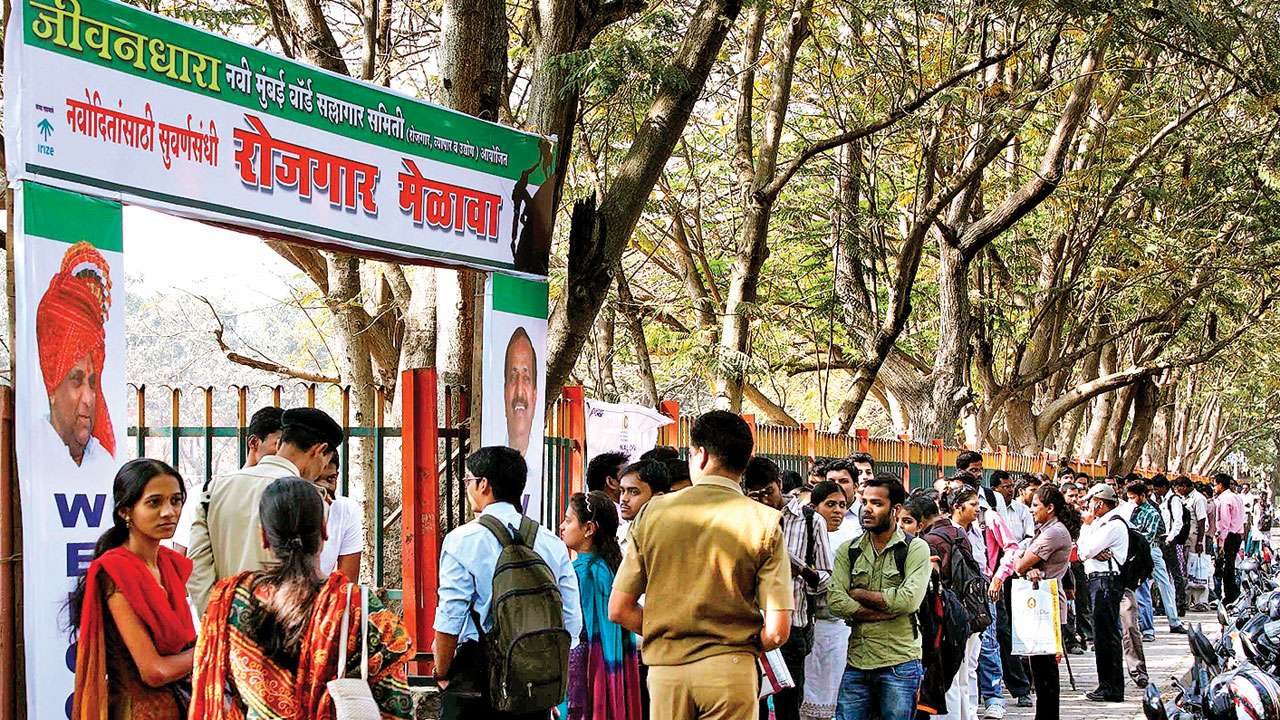
Recent reports suggest that the Government of India may have withheld data of latest unemployment figures, post the 2016 Indian demonetisation.
Reason being, unemployment figures are at a 4-decade-high at more than 6 per cent. As reported both by domestic and international media, this would have led to massive embarrassment to the current NDA government and would have been related to the adverse consequences of its 2016 demonetisation experiment, especially this being the year of the General Election.
Responding to concerns, India’s NITI Aayog and its CEO Amitabh Kant noted that jobs are being created in millions through firms like Ola and Uber.
We are here not to deride or applaud the situation with this latest great Indian unemployment and self-employment debate.
But it is to use Kant’s Ola/Uber example to point to the fact that more than unemployment data (of the traditional kinds churned out by NSSO over time), what is essential in India today is employer-employee (EE) data, such that one can understand if indeed unemployment in the country is being substituted with self-employment (or more formally entrepreneurship), be that by participating in the gig economy or by selling pakodas.
It is also important here with such EE data to understand temporal, geographic and sectoral variations.
Such an endeavour could also potentially unearth distributional implications of inequality coming from trade shocks like competition from Chinese imports, automation shocks or even stronger intellectual property related shocks varying by sector and firms.
Furthermore, the quality and dignity of jobs if surveyed and included in EE datasets, can bring forth a clearer picture of welfare connotations of entrepreneurship.
In addition, this data can also be extended by matching with other data sources like in healthcare to understand how employment shocks may have unintended consequences for healthcare choices households make in the economy.
One can also study if mobility of labour is potentially happening within India as a function of climate change shocks like North India’s air pollution, by merging this data with air pollution satellite data.
Several countries around the world today have EE datasets, including not just US and the more well developed Scandinavian countries, but also institutionally weaker Latin American ones like Brazil, Chile and even Asian peers like China and Japan.
Take for example the Japanese case. Kyoji Fukao and his co-authors from the Hitotsubashi University used two sources in 2006 to create the Japanese matched EE dataset.
The employer‐side information came from the annual Census of Manufacture, Larger Establishment Sample, which covers all establishments in the Japanese manufacturing sector with 30 or more full‐time employees.
Though not perfect, it is the equivalent of India’s CMIE-Prowess dataset or government-provided Annual Survey of Industries.
The employee‐side information comes from the Basic Survey of Wage Structure, an annual survey of establishments in all sectors with 10 or more full‐time employees, which is where statistical effort is required in India.
The employer transcribes individual workers’ information on work hours, wage, age, education, tenure and bonus for the year prior to the survey.
Admittedly, sustaining waves of EE datasets over time requires coordination among various government agencies, but if jobs are a critical input to India’s purportedly jobless growth phenomena and its associated political cycles, and if entrepreneurship is being touted as the panacea herein, there is not much way out but to invest resources in the same.
The sustainability of this data creation endeavour especially is important, learning from Australia’s example, where there was just one wave of EE datasets created in the Australian Workplace Industrial Relations Survey (AWIRS) 1995, but it was never repeated.
A critical issue here comes from providing confidentiality of employee details and maintaining security of data. Cornell economist and current chief scientist of US Census Bureau, John Abowd, has shown the way here in the company of his co-authors with a technique called permanent multiplicative noise distortion factor that can offer solutions here to India’s statistical community.
Of course, there are major cultural differences; while Norway has adopted a legislative framework for confidentiality, anybody there can also check online to see someone else’s earnings, their wealth and annual taxes in any given year, with appropriate sophisticated safeguards to prevent misuse.
Employer employee datasets are at the core of answering the relationship between unemployment and entrepreneurship and related cycles herein, varying across sectors and regions.
It also is a gateway to answer a classic debate highlighted by David Evans and Boyan Jovanovic in their 1989 paper, which raises the deliberation between Frank Knight and Joseph Schumpeter.
Knight argued that entrepreneurs are not there just to unearth an unmet need; many times they have to wear the financing hat, which Schumpeter was not attentive to in his characterisation of the entrepreneur.
Evans and Jovanovic show that liquidity constraints are an important conditioning input to enable and augment entrepreneurship and if today indeed India’s unemployed youth are turning self-employed, they will need support from India’s credit and financing ecosystem.
This was also demonstrated recently in US where the gig economy (like being an Uber driver) is also being supported by the emergence of shadow banks and looser credit constraints to own vehicles, as work by Stanford economist Amit Seru and co-authors have shown.
The banking sector, of course, raises another set of questions in India, but before this becomes asking for the moon, let’s stay with asking for land instead, moving the great Indian unemployment debate to creating EE datasets. Here is an opportunity out of a conundrum Indian policy makers should not miss.
Author is with IIM-A and Hoover Institution